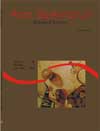<b>Enumeration and isolation of facultative anaerobic bacteria in an upflow anaerobic sludge blanket reactor treating wastewater from a gelatine industry</b>- DOI: 10.4025/actascibiolsci.v25i2.1977
Abstract
This experiment measured levels of facultative anaerobic bacteria in an Upflow Anaerobic Sludge Blanket (UASB) reactor treating wastewater from a gelatin industry. The microorganism quantification showed similar values in granular sludge bed and fluidized zone. In the settling compartment of reactor, the bacteria were two logs lower. These communities are composed mainly of Gram-negative rods. The most abundant genera isolated were Acinetobacter, Aeromonas, Citrobacter, Escherichia, Klebsiella and Stenotrophomonas. The significance of the bacteria isolated from UASB reactor for public health is unknown. Some species are permanent residents; other are found only in a fraction of the population, and still other species are opportunistic pathogens that cause human infections. In the present study, none of the predominant bacteria belonged to the group of strict pathogensDownloads
Download data is not yet available.
Published
2008-04-17
How to Cite
Vieira, A. M. S., Bergamasco, R., Gimenes, M. L., Nakamura, C. V., & Dias Filho, B. P. (2008). <b>Enumeration and isolation of facultative anaerobic bacteria in an upflow anaerobic sludge blanket reactor treating wastewater from a gelatine industry</b>- DOI: 10.4025/actascibiolsci.v25i2.1977. Acta Scientiarum. Biological Sciences, 25(2), 257-260. https://doi.org/10.4025/actascibiolsci.v25i2.1977
Issue
Section
Biology Sciences
DECLARATION OF ORIGINALITY AND COPYRIGHTS
I Declare that current article is original and has not been submitted for publication, in part or in whole, to any other national or international journal.
The copyrights belong exclusively to the authors. Published content is licensed under Creative Commons Attribution 4.0 (CC BY 4.0) guidelines, which allows sharing (copy and distribution of the material in any medium or format) and adaptation (remix, transform, and build upon the material) for any purpose, even commercially, under the terms of attribution.
Read this link for further information on how to use CC BY 4.0 properly.
0.6
2019CiteScore
31st percentile
Powered by 

0.6
2019CiteScore
31st percentile
Powered by 











1.png)




3.png)













